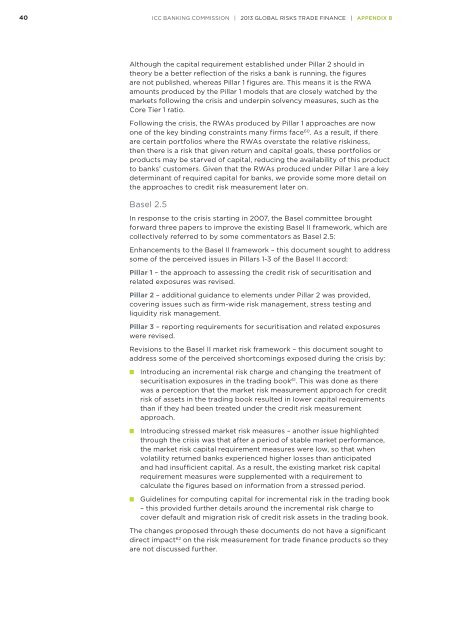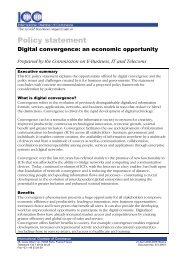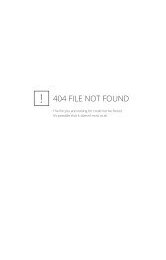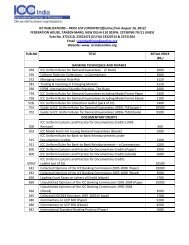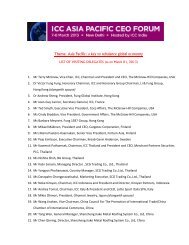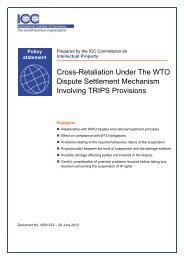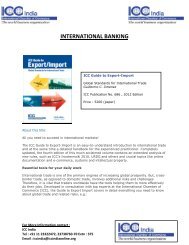2013 - ICC India
2013 - ICC India
2013 - ICC India
- No tags were found...
Create successful ePaper yourself
Turn your PDF publications into a flip-book with our unique Google optimized e-Paper software.
40<strong>ICC</strong> BANKING COMMISSION | <strong>2013</strong> GLOBAL RISKS TRADE FINANCE | APPENDIX BAlthough the capital requirement established under Pillar 2 should intheory be a better reflection of the risks a bank is running, the figuresare not published, whereas Pillar 1 figures are. This means it is the RWAamounts produced by the Pillar 1 models that are closely watched by themarkets following the crisis and underpin solvency measures, such as theCore Tier 1 ratio.Following the crisis, the RWAs produced by Pillar 1 approaches are nowone of the key binding constraints many firms face 60 . As a result, if thereare certain portfolios where the RWAs overstate the relative riskiness,then there is a risk that given return and capital goals, these portfolios orproducts may be starved of capital, reducing the availability of this productto banks’ customers. Given that the RWAs produced under Pillar 1 are a keydeterminant of required capital for banks, we provide some more detail onthe approaches to credit risk measurement later on.Basel 2.5In response to the crisis starting in 2007, the Basel committee broughtforward three papers to improve the existing Basel II framework, which arecollectively referred to by some commentators as Basel 2.5:Enhancements to the Basel II framework – this document sought to addresssome of the perceived issues in Pillars 1-3 of the Basel II accord:Pillar 1 – the approach to assessing the credit risk of securitisation andrelated exposures was revised.Pillar 2 – additional guidance to elements under Pillar 2 was provided,covering issues such as firm-wide risk management, stress testing andliquidity risk management.Pillar 3 – reporting requirements for securitisation and related exposureswere revised.Revisions to the Basel II market risk framework – this document sought toaddress some of the perceived shortcomings exposed during the crisis by:■■■■■■Introducing an incremental risk charge and changing the treatment ofsecuritisation exposures in the trading book 61 . This was done as therewas a perception that the market risk measurement approach for creditrisk of assets in the trading book resulted in lower capital requirementsthan if they had been treated under the credit risk measurementapproach.Introducing stressed market risk measures – another issue highlightedthrough the crisis was that after a period of stable market performance,the market risk capital requirement measures were low, so that whenvolatility returned banks experienced higher losses than anticipatedand had insufficient capital. As a result, the existing market risk capitalrequirement measures were supplemented with a requirement tocalculate the figures based on information from a stressed period.Guidelines for computing capital for incremental risk in the trading book– this provided further details around the incremental risk charge tocover default and migration risk of credit risk assets in the trading book.The changes proposed through these documents do not have a significantdirect impact 62 on the risk measurement for trade finance products so theyare not discussed further.


